Celebrate St. Patrick’s Day in NYC 2025
Discover 10 ways to celebrate St. Patrick's Day in NYC this year, from eye-opening tours to Irish treats!


On view starting today, timed with the return of fall, as well as the centenary of the 1918 flu epidemic, is the Museum of the City of New York exhibition”Germ City.” More than a historical account of disease, Germ City looks at the subject through the lens of the metropolis, mixing history and artifacts with contemporary art to viscerally show how diseases have affected people and the urban environment.
Sarah M. Henry, Deputy Director and Chief Curator at the Museum of the City of New York said at a press event on Thursday, “New York has always been a crossroads of people, goods and ideas, and also of germs.” Dr. Simon Chaplin, Director of Wellcome, the London museum and library that provided lead support for the exhibition, provided an apt analogy: “Microbes inhabit us, like we inhabit cities.” Germ City certainly builds on the Museum’s permanent exhibition, New York at its Core, which Henry also curated. Germ City is curated in partnership with the New York Academy of Medicine and additional assistance from the Tenement Museum, New York Public Library, the Graduate Center at CUNY and the Brooklyn Historical Society.
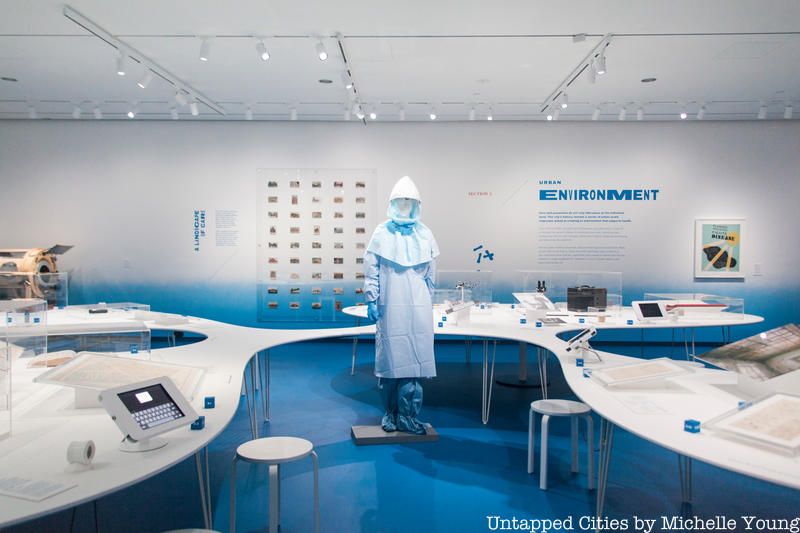
Today, germs and diseases are at the forefront of the news, and Chaplin opened with a reference to the recent airplane quarantine at JFK Airport. “That did not turn into a big story and a natural disaster,” he says, “but it could have.” In contrast to a natural disaster, he says, epidemics are even harder to predict. “We know it’s there, we know what it can do, [but] it’s much harder to see it coming,” he contends. Judith Salerno, President of the New York Academy of Medicine further contends that public health issues are different today but more prevalent than ever, enumerating the opioid epidemic, high obesity rates, the persistence of HIV, ebola, and more that plague groups and regions of the world. “Germ City tells the story of real people and the impact of disease on their lives,” she says.
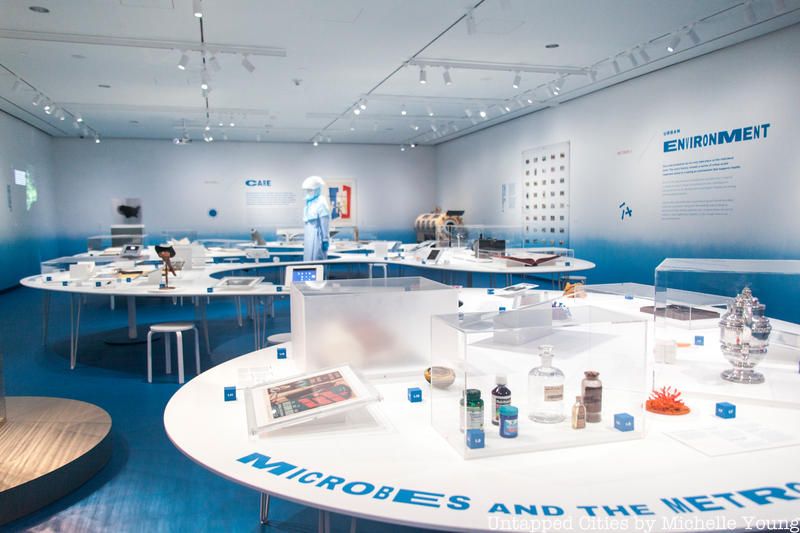
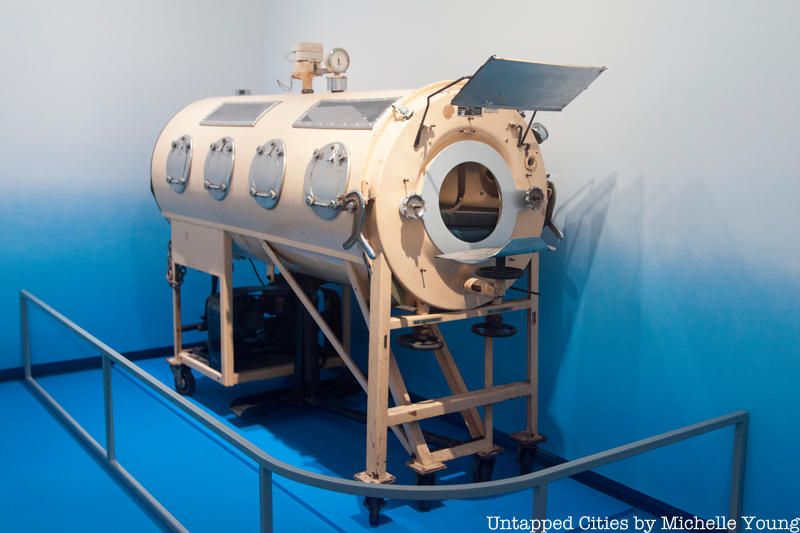
An iron lung respirator used at Goldwater Hospital on Roosevelt Island
Whitney Donhauser, President of the Museum of the City of New York, says that Germ City tells not just the history of disease, but also showcases the rights of individuals, as well as their collective responsibility in the prevention of infectious diseases. Germ City, which is the inaugural exhibition of Contagious Cities, a three-city international initiative from Wellcome, offers the opportunity to “study the complex relationships between microbes, migration and the metropolis,” says Donhauser.
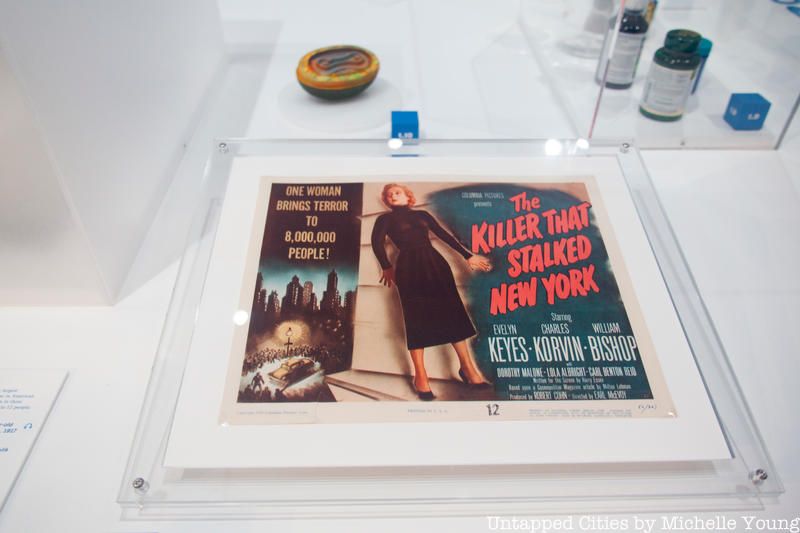
The 1918 flu epidemic provides a nice case study for Germ City, with the first death documented death exactly one hundred years ago this past weekend. A third of the world’s population was infected with Spanish flu, and New York City suffered higher death rates than London, Berlin and Paris, with over 20,600 dying in the first two months. But the city fared much better than any other coastal city in the United States, and better than most cities across the country. This, Henry says, was “due in part to New York’s response which was building upon a very robust public infrastructure that was established over the course of preceding generations. New York health officials launched a very dynamic and dramatic response to the flu.”
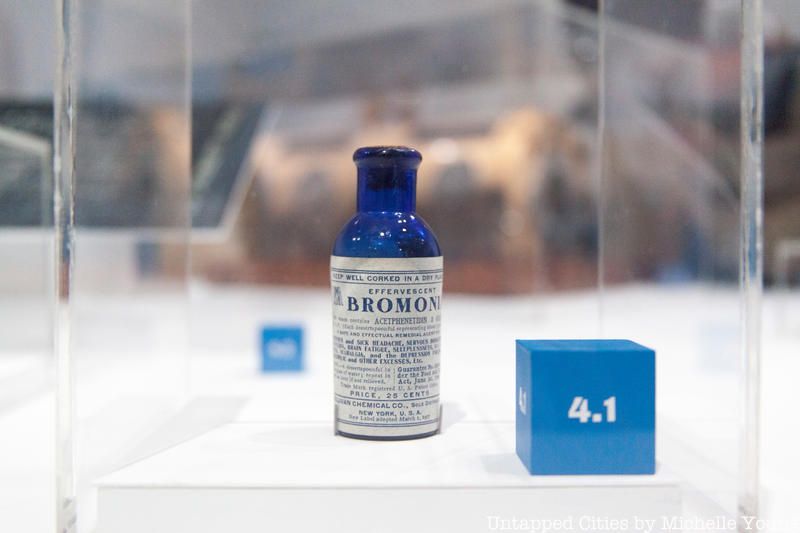
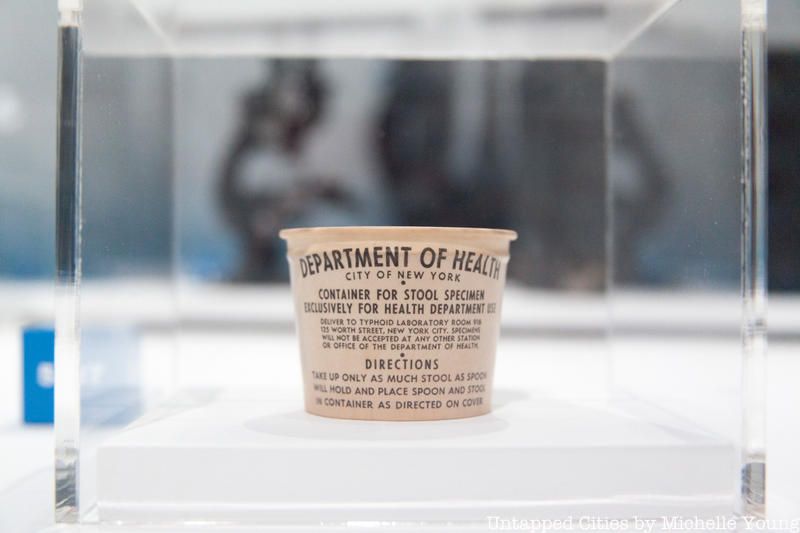
Germ City is organized into four ways New Yorkers have responded to the threat from microbes: Containment, Investigation, Care, and Engagement. The exhibition covers how infectious disease has shaped the city from the water system, to housing, to sanitation, and more. Disease has also influenced debates over hot issues like immigration, gender, wealth, and poverty, says Henry, and serves as a lens into the city, as well as a force upon it.
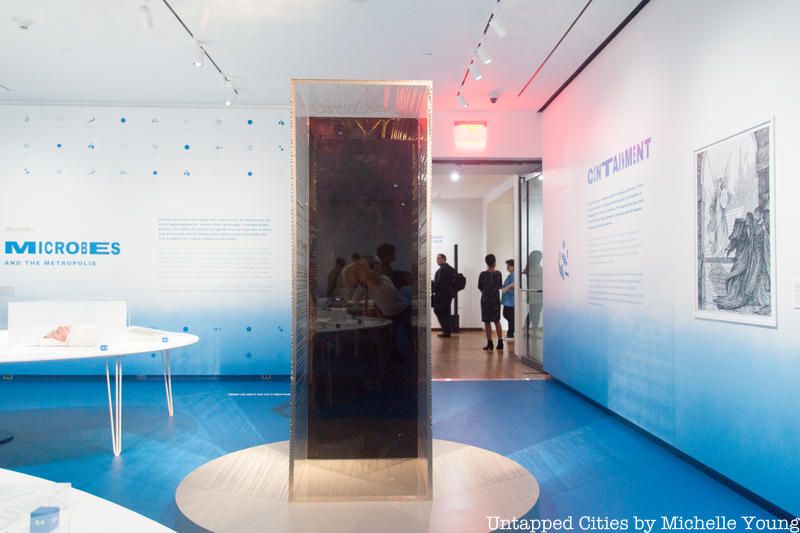
“Blood Mirror” by Jordan Engles
Inside the exhibition, you will find artwork like a “Blood Mirror” by Jordan Engles, which features 59 blood donations from gay, bisexual and transgender men preserved in a UV resin, as well as a “Pan African Art” by Ekene Ijeoma, a sequence of plexiglass plates with black vinyl outlines of Africa and America, a work that aims to highlight the contrast in HIV visibility in Africa, where disease rates are falling, and the under-the-radar epidemic within America’s Black population, where rates are rising.
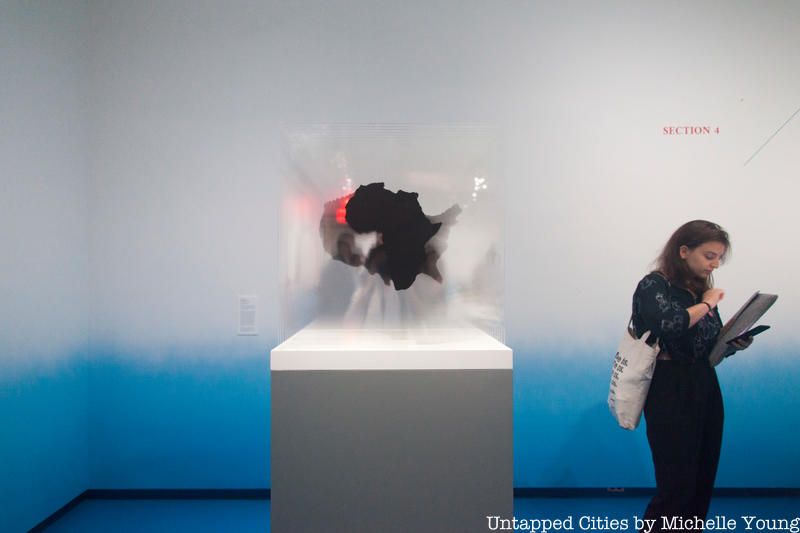
“Pan African Art” by Ekene Ijeoma
In addition, there are artifacts like an iron lung respirator that was once used on polio patients in the mid-20th century at the now-demolished Goldwater Hospital on Roosevelt Island, an anatomic face model of a 15-year old patient with smallpox, a medical inspection card from an immigrant arriving to Ellis Island, photographs by Christopher Payne on North Brother Island (to showcase the story of Typhoid Mary), an interview with a former nurse at Seaview Hospital on Staten Island (where the cure for tuberculosis was discovered) and more. Here are a few highlights:
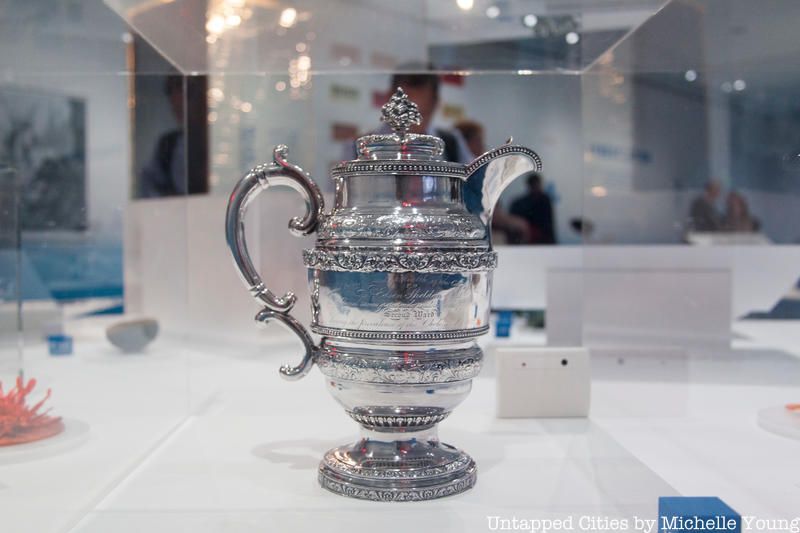
Silver ewer presented by New York Board of Health to N. Edison Sheldon, M.D., the ward physician in one of the poorest districts in New York City who worked tirelessly to contain the 1832 cholera outbreak. He is credited with identifying the first case during the outbreak.
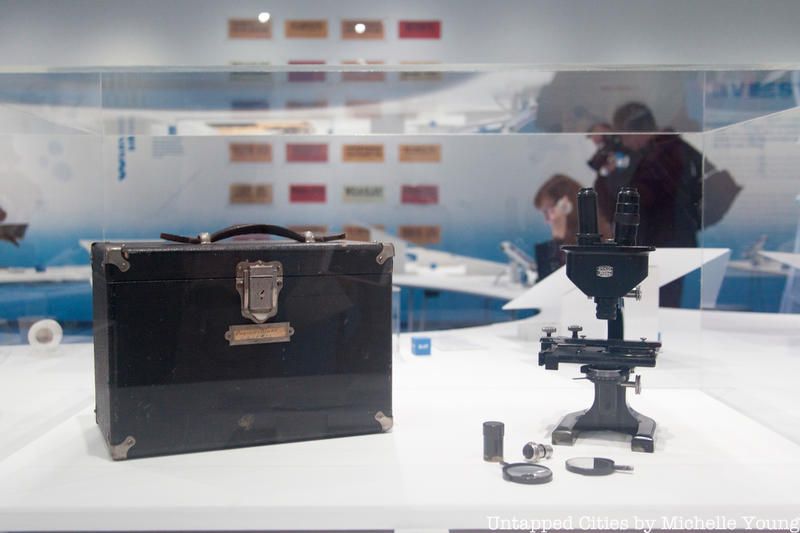
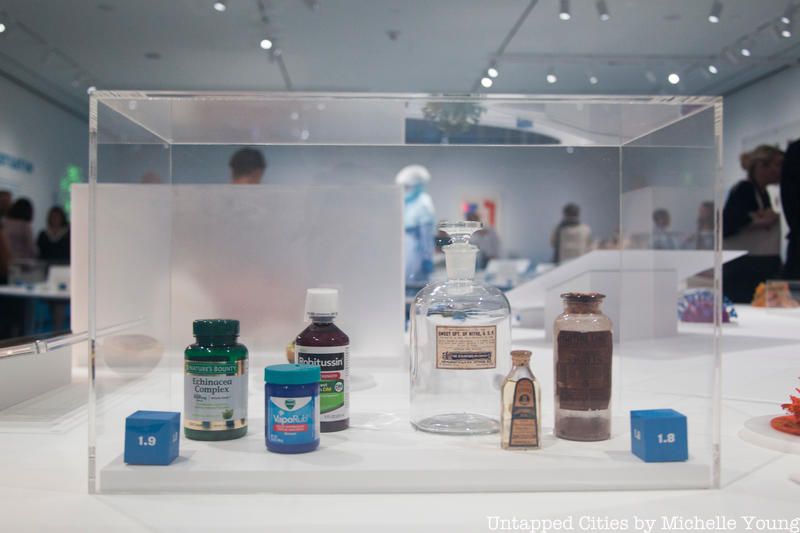
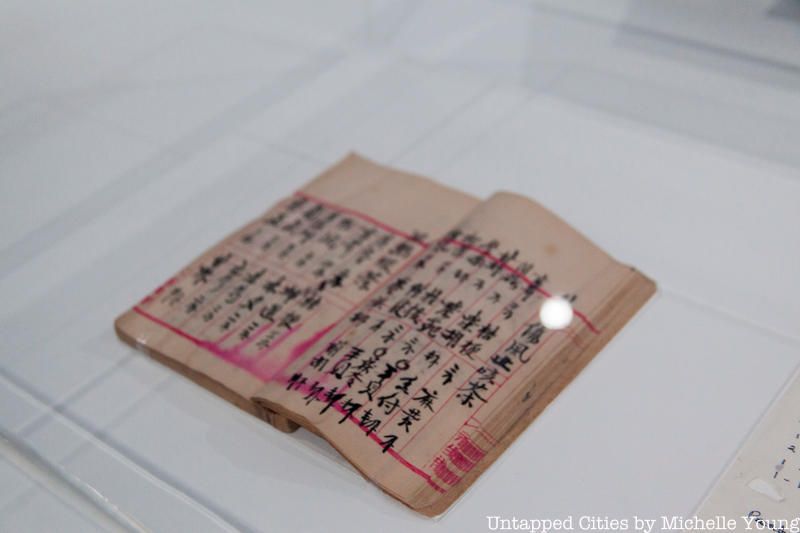
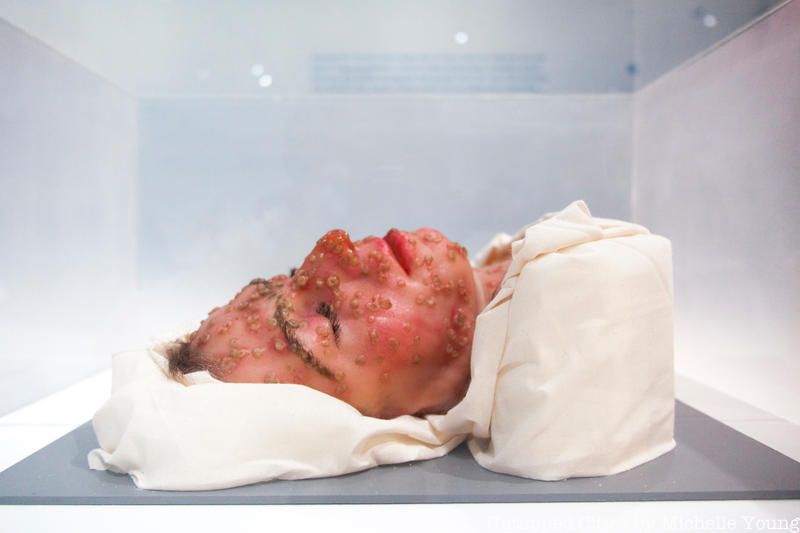
Anatomical model of 15-year-old boy with smallpox
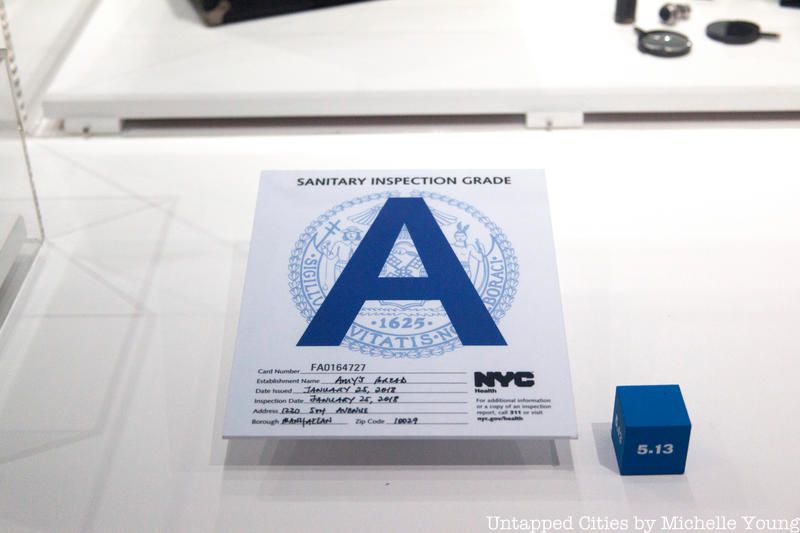
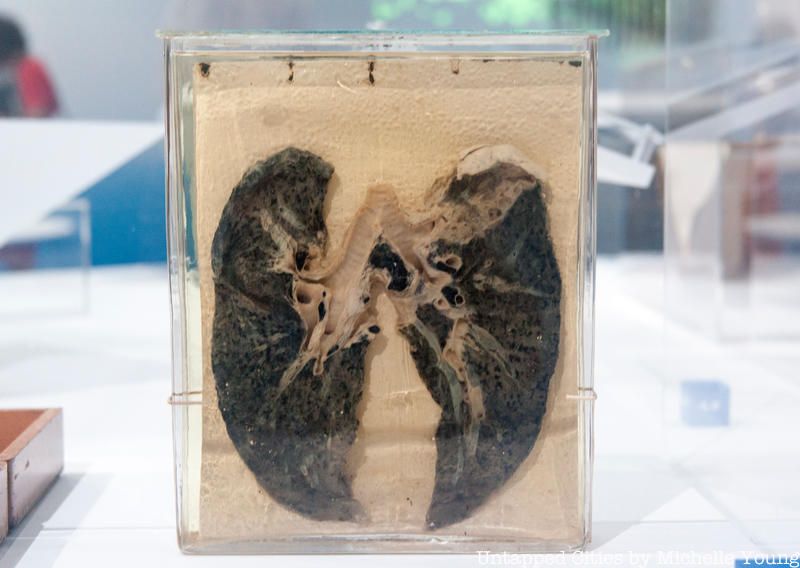
Adult human lung specimen that shows long term effects of tuberculosis
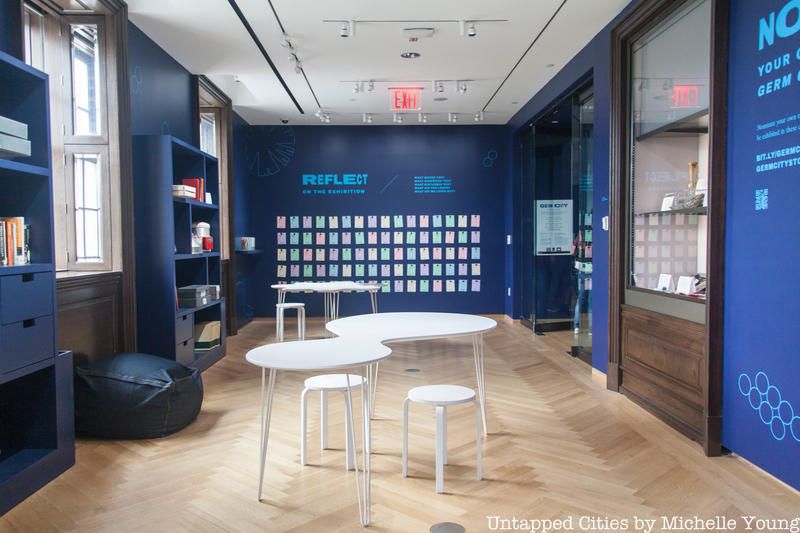
A light filled room adjacent to Germ City allows you to reflect on the exhibition
The exhibition will be on view through April and there will be also a robust set of programming in and outside the museum in connection. First, you can join in on a curator walkthrough through of Germ City with our Untapped Cities Insiders program on September 24th or attend a the talk “The World’s Deadliest Pandemic: A Century Later” on September 27th. At the New York Academy of Medicine on February 6, 2019 will be the event “Remembering the Dead.” You can also take our hard hat tour of the abandoned hospitals on Ellis Island, which run every Saturday and Sunday to learn about how the country handled infectious disease containment and treatment for over a hundred years:
Subscribe to our newsletter